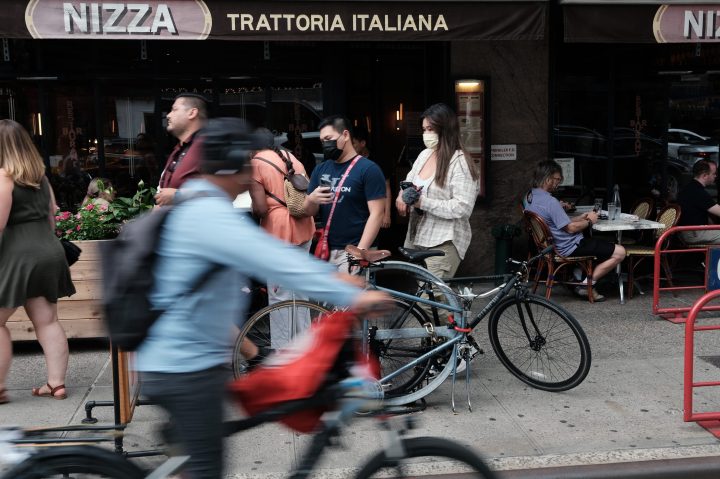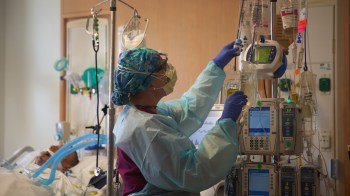
Many Americans are still concerned about getting COVID-19

New cases of COVID-19 in the U.S. are now averaging below 30,000 per day. To find a time in the pandemic when cases were lower, you have to go back all the way to early July of last year — before the big delta wave hit. Now that the omicron wave is past, the Centers for Disease Control and Prevention has relaxed masking and other prevention recommendations.
But a recent poll from the Kaiser Family Foundation finds that a lot of Americans still perceive they and their loved ones are at risk from COVID — and that affects how the consumer economy is recovering.
The Kaiser Family Foundation finds 60% of U.S. adults haven’t fully returned to pre-pandemic activities. And public opinion director Liz Hamel said people are sharply divided over how much they should worry about COVID.
“Six-in-ten people say they think that people should continue to wear masks in some public places to minimize the spread and avoid another surge. Whereas the other 4-in-10 say, ‘No, people should just stop wearing masks in most places so we can just get back to normal,'” she said.
Hamel said white people, Republicans and the unvaccinated are the least likely to be concerned and take COVID precautions. Black and Hispanic people are more likely to mask up and support mask mandates.
“People of color are disproportionately represented in lower-income jobs or jobs that are in the service industry exposed to the public,” she said, adding that they’re less likely to get paid sick leave on the job.
Still, all that worry isn’t holding people back from getting out and spending.
Polling firm Morning Consult finds three-quarters of us are now comfortable going to a restaurant, nearly as many are good with shopping at a mall.
But some changes in consumer behavior might not revert back, said Chief Economist John Leer. For example, even though we might feel perfectly fine going to the movies, “now people have bought really nice televisions, and they’ve got nice setups to watch movies at home, production companies releasing movies for people to watch at home. And it’s hard for me to see how that jumps back to some pre-pandemic world, in terms of where people are spending their money.”
Meanwhile, job creation is strong. Unemployment and layoffs are now as low or lower than before the pandemic.
But COVID is still a drag on full job-market recovery, said Robert Frick at Navy Federal Credit Union: because of illness, fear and burnout.
“We’re 300,000 health care jobs short of the pre-pandemic high. The hangover from COVID is going to be long and lasting,” he said.
Day care is still down more than 100,000 jobs. Frick said each of those missing workers means some parents can’t get fully back to work yet, either.
There’s a lot happening in the world. Through it all, Marketplace is here for you.
You rely on Marketplace to break down the world’s events and tell you how it affects you in a fact-based, approachable way. We rely on your financial support to keep making that possible.
Your donation today powers the independent journalism that you rely on. For just $5/month, you can help sustain Marketplace so we can keep reporting on the things that matter to you.

















